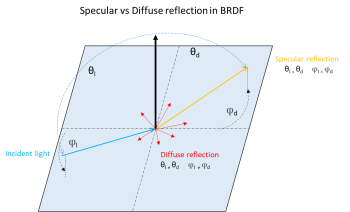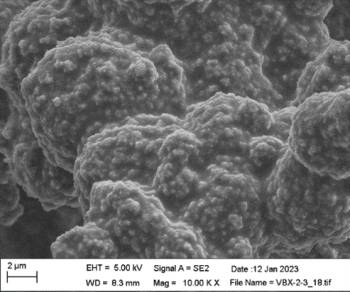What is BRDF measurement, and how does it relate to stray light suppression?
Camera design engineers and data processor suppliers that are engaged in automotive ADAS technology development require sensor data clarity in all lighting conditions. To achieve this in difficult lighting conditions they specify light suppression materials to minimise the impact of unwanted interference from stray light.
Stray light can arrive at a non-target surface from all angles. Reflection from these surfaces can cause glare and camera interference. Light suppression materials are introduced to reduce or eliminate this interference. Many materials are very effective at a near normal 8° Angle of Incidence (AOI), but performance can drop dramatically as the AOI increases, often exhibiting very high levels of specular reflectance at shallow grazing angles. Therefore, a single measurement of Total Hemispherical Reflectance (THR) at 8° does not give designers the information they need to specify effective stray light suppression for all lighting conditions.

BRDF - the best measure of 'real life' performance in stray light suppression
Using Bidirectional Reflectance Distribution Function (BRDF) as a measure gives reflectance data at all angles of incidence and all angles of detection, and is therefore a much more representative measure for real life performance than THR alone. BRDF measurements allow us to determine the amount of both specular and diffuse light scattering form the surface of a material. Note: Bidirectional Scattering Distribution Function (BSDF) is also commonly referenced in this field and measures transmitted light as well as reflected light. Both techniques follow the same measurement principles, but BRDF is used when there is zero light transmission in opaque surfaces.
 Lambertian surfaces
Lambertian surfaces
It is important for light suppression technologies to exhibit diffuse light reflection primarily – these are called Lambertian surfaces. This prevents bright spots and glare which are common in specular surfaces by distributing the incoming light uniformly in all directions. Lambertian surfaces maintain consistent reflective properties regardless of the viewing angle. This isotropic reflection means that the light suppression effect is uniform across the entire surface, ensuring reliable performance in diverse applications regardless of ambient lighting variations.
Like all Vantablack coatings, Vantablack Vision is almost completely Lambertian in its low reflectance, as seen in BRDF* and Total Integrated Scatter (TIS) measurement, giving it market leading performance in automotive light suppression systems. See Vantablack Vision Lambertian surface magnification 1000 image, above.
* Full BRDF reports are available on request. The data is generated by Synopsis, France
Find out more
Contact us on +44 (0) 1273 515899,
or see our contact page.
